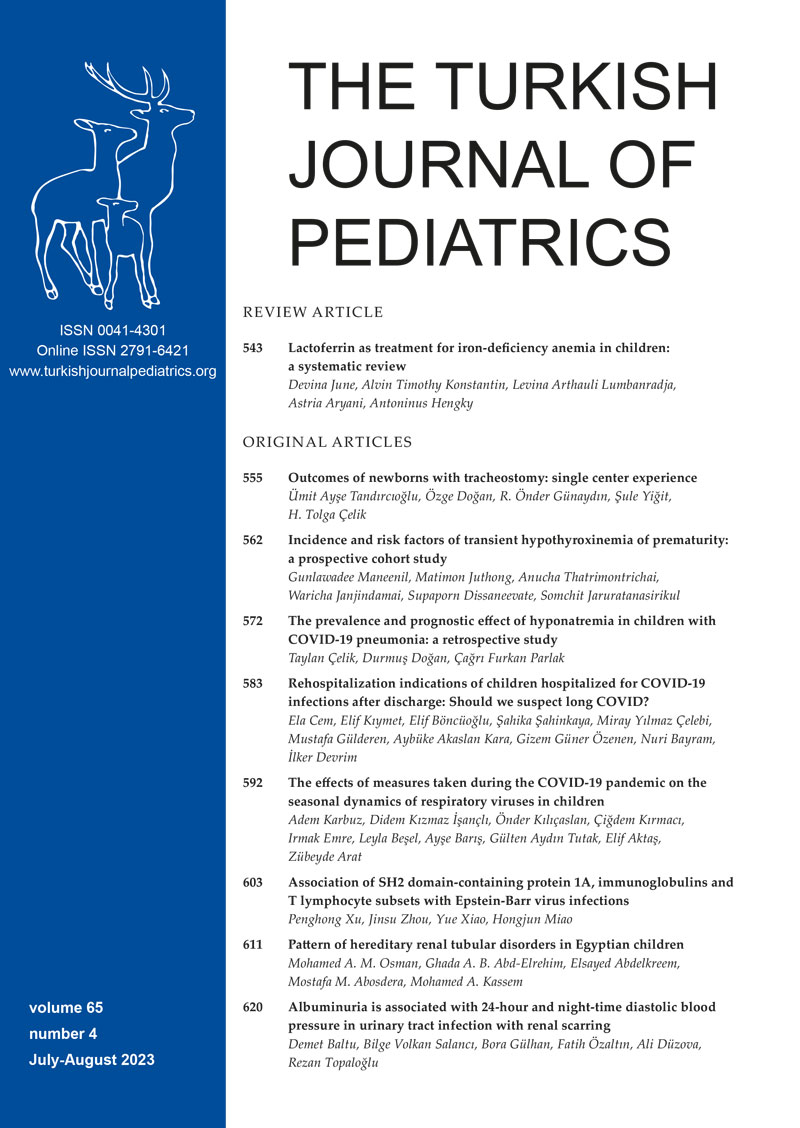Abstract
Background. The association of meatal stenosis with age at circumcision is controversial. We noticed a high rate of meatal stenosis in a region where early circumcision is traditional. The aim of this study is to compare the age at circumcision between boys with or without meatal stenosis.
Methods. After ethical approval, families of children with meatal stenosis were questioned about age at circumcision and reason for circumcision. Control group consisted of patients with diagnoses other than penile abnormalities, a normal urethral meatus, and having no symptoms about urination. Patients with a history of therapeutic circumcision were excluded from the study.
Results. Between November 2016 and November 2020, 115 patients with meatal stenosis were admitted. All were corrected with ventral meatotomy under general anesthesia. Median age at circumcision was 3 (min:0-max:111) monthsand age at admission was 74 (min:22-max:194) months. Control group consisted of 205 boys. Median age at circumcision was 5 (min:0-max:122) months and age at admission was 96 (13-202) months. There was a statistically significant difference between groups in terms of age at circumcision (p=0.024) but none for age at admission (p=0.356). There was a twofold increase in the meatal stenosis rate (39% vs. 23%) if circumcision was performed before age one (p=0.018). There was no difference between the patients circumcised in the newborn period and later (38% vs 36%, p=0.778).
Conclusions. Our study supports the previous reports suggesting a relation of risk for meatal stenosis and age at circumcision and presents data that age one might be a cutoff for this risk.
Keywords: circumcision, infant, meatal stenosis, meatal web, neonatal
Copyright and license
Copyright © 2023 The Author(s). This is an open access article distributed under the Creative Commons Attribution License (CC BY), which permits unrestricted use, distribution, and reproduction in any medium or format, provided the original work is properly cited.














